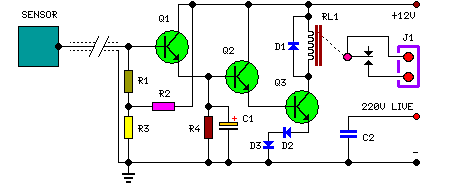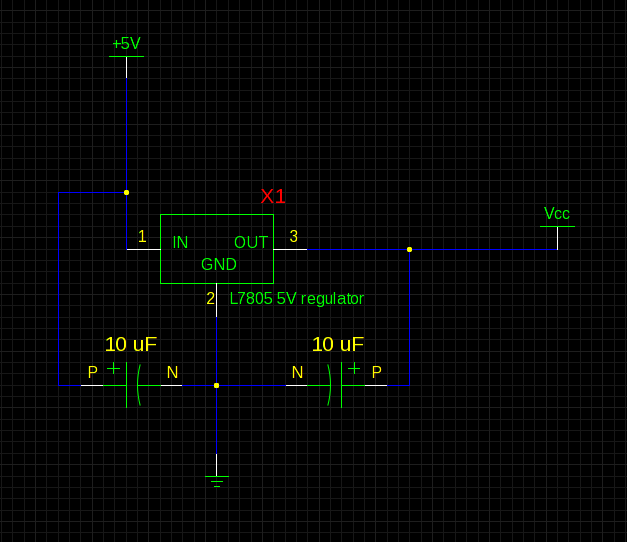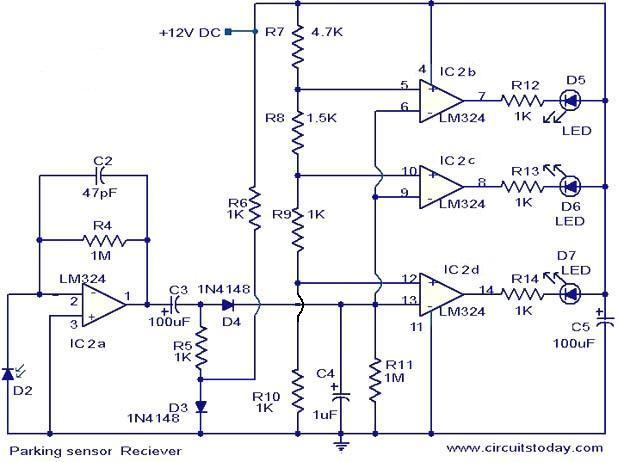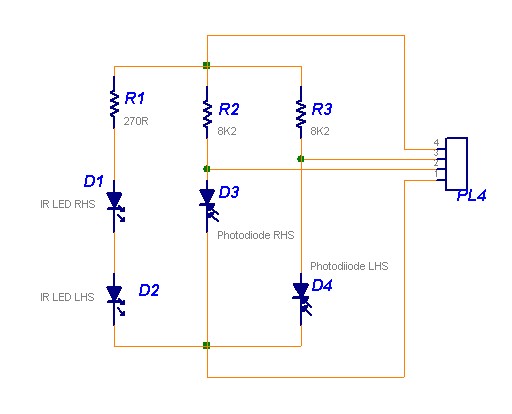
Cold Sensor
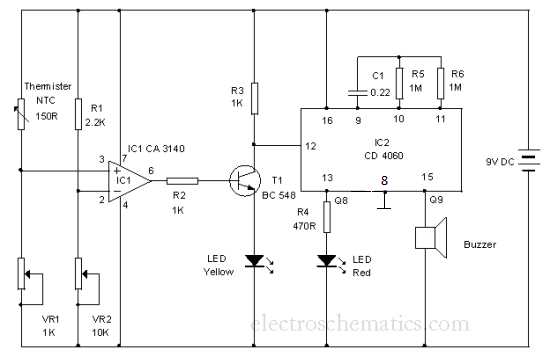
The resistance decreases when the temperature in its vicinity increases by one degree or more. Component: LED, Buzzer, Transistor, Capacitor, etc.
The described component exhibits a negative temperature coefficient, which means that its resistance decreases as ambient temperature increases. This behavior is characteristic of certain thermistors, specifically NTC (Negative Temperature Coefficient) thermistors, which are commonly used in temperature sensing and compensation applications.
In a circuit design, this NTC thermistor can be integrated with various components such as LEDs, buzzers, transistors, and capacitors to create a temperature-sensitive device. For instance, when the temperature rises, the resistance of the thermistor drops, allowing more current to flow through the circuit. This increased current can be utilized to activate an LED, providing a visual indication of temperature changes, or to trigger a buzzer, which can serve as an audible alarm.
The transistor can be employed as a switch or amplifier in this configuration. When the thermistor's resistance decreases sufficiently, it can turn on the transistor, which in turn allows a larger current to flow through the LED or buzzer. The capacitor can be used for smoothing out voltage fluctuations in the circuit, ensuring stable operation.
In summary, the integration of an NTC thermistor with these components allows for the development of a versatile temperature monitoring and alert system that can be applied in various electronic applications, including HVAC systems, automotive temperature sensing, and consumer electronics.Its resistance decreases when the temperature in its vicinity increases above one degree or more. Component: LED, Buzzer, Transistor, Capacitor, .. 🔗 External reference
The described component exhibits a negative temperature coefficient, which means that its resistance decreases as ambient temperature increases. This behavior is characteristic of certain thermistors, specifically NTC (Negative Temperature Coefficient) thermistors, which are commonly used in temperature sensing and compensation applications.
In a circuit design, this NTC thermistor can be integrated with various components such as LEDs, buzzers, transistors, and capacitors to create a temperature-sensitive device. For instance, when the temperature rises, the resistance of the thermistor drops, allowing more current to flow through the circuit. This increased current can be utilized to activate an LED, providing a visual indication of temperature changes, or to trigger a buzzer, which can serve as an audible alarm.
The transistor can be employed as a switch or amplifier in this configuration. When the thermistor's resistance decreases sufficiently, it can turn on the transistor, which in turn allows a larger current to flow through the LED or buzzer. The capacitor can be used for smoothing out voltage fluctuations in the circuit, ensuring stable operation.
In summary, the integration of an NTC thermistor with these components allows for the development of a versatile temperature monitoring and alert system that can be applied in various electronic applications, including HVAC systems, automotive temperature sensing, and consumer electronics.Its resistance decreases when the temperature in its vicinity increases above one degree or more. Component: LED, Buzzer, Transistor, Capacitor, .. 🔗 External reference
